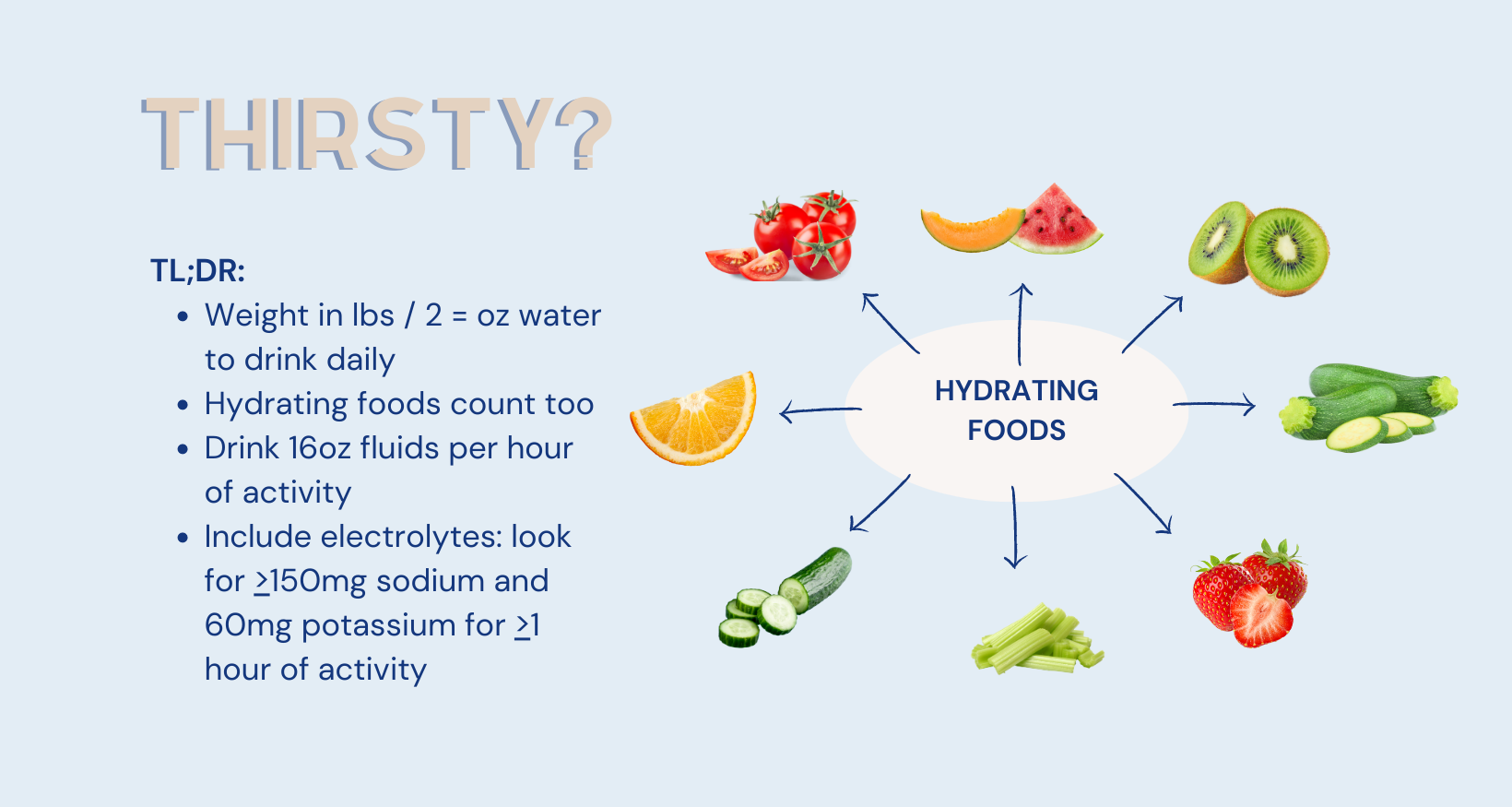When and How to Hydrate While Running, Biking, Swimming, Sweating, or Moving Your Body
NUTRITION COACHING AND MEAL PLANNING FROM YOUR REGISTERED DIETITIAN NUTRITIONIST HERE IN BOSTON’S BACK BAY
Get your free Fuel & Hydration Guide to accompany this post. And make sure you’ve read about how to build a performance plate - aka meals that keep up with you.
Hydration Part 1: Fluids
Water is typically what comes to mind when we think of hydration, and it’s true! We need water to support almost every process in our body. At baseline, the amount of water you should consume daily is:
Your weight in pounds / 2 = ounces of water daily
But - water can get boring. The good news is that fluids besides plain water also keep us hydrated, including:
Coffee and tea
Milk
100% juice
Seltzer
When it comes to running, biking, swimming, or moving your body and sweating in any way, you need to up the ante to prevent dehydration with the following guidelines:
Drink an extra 20-30oz water the night before
Include hydrating foods! See above.
Drink 16oz of water when you wake up and 45 minutes before exercise
Sip 16oz for every hour of activity
See page 5 of the Fuel & Hydration Guide for a detailed timeline, and know that your fluid needs may vary because of factors including your sweat rate and the temperature.
Hydration Part 2: Electrolytes
You don’t need to use expensive electrolyte powders or drink them all day long. Prioritizing saltier and magnesium-rich foods around your exercise may be enough, though sports drinks and supplements do come in handy (and will be necessary) for longer events and sweatier workouts.
To stay hydrated if you’ve got a long run, race, or performance event lasting >1 hour:
Include salty foods (like pickles) the day before and morning of
Use a sports drink (Gatorade) or electrolyte supplement (Nuun Sport) in your water before
Add electrolytes to your water during: at least 150mg sodium and 60mg potassium for every 8oz.
Salty foods and fluids after will help you rehydrate and refuel. (Hint: Chocolate milk is near perfection.)
See page 5 of the Fuel & Hydration Guide for more recommendations.
Putting It All Together
Remember: dehydration doesn’t just show up as thirst; it can be any/all of the symptoms highlighted in our Dehydration Sucks blog and the post below. Stay ahead of your thirst, and swipe to see a urine color scale that can help you keep tabs on your hydration throughout the day.
If you’re looking for more guidance and want a personalized hydration plan for your exercise or an upcoming race, let’s meet for 1:1 nutrition counseling. Schedule your free discovery call here.

